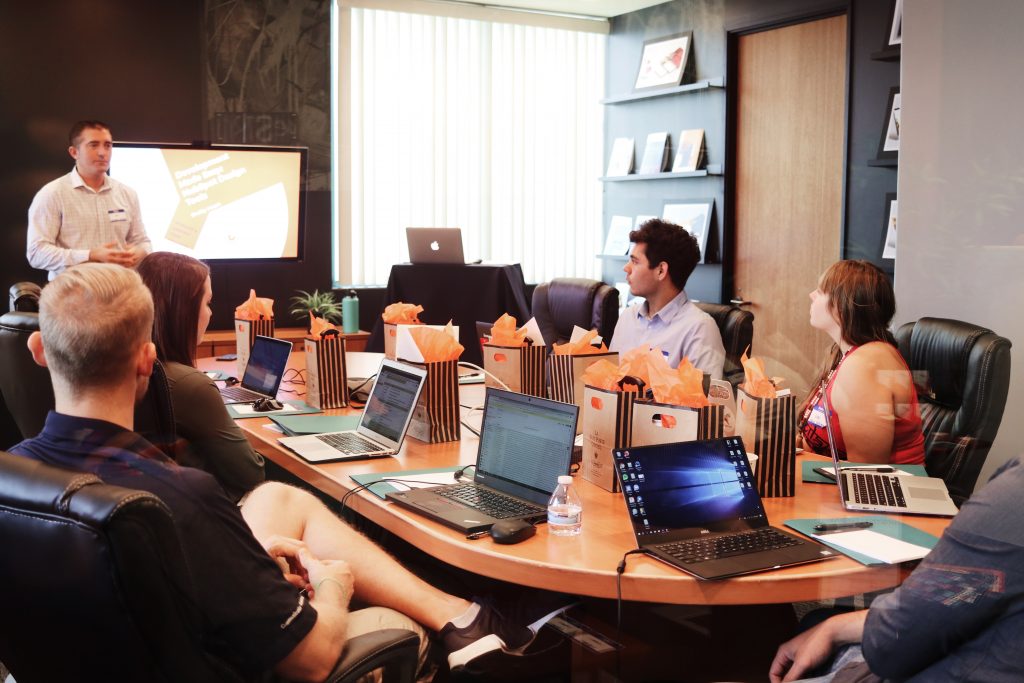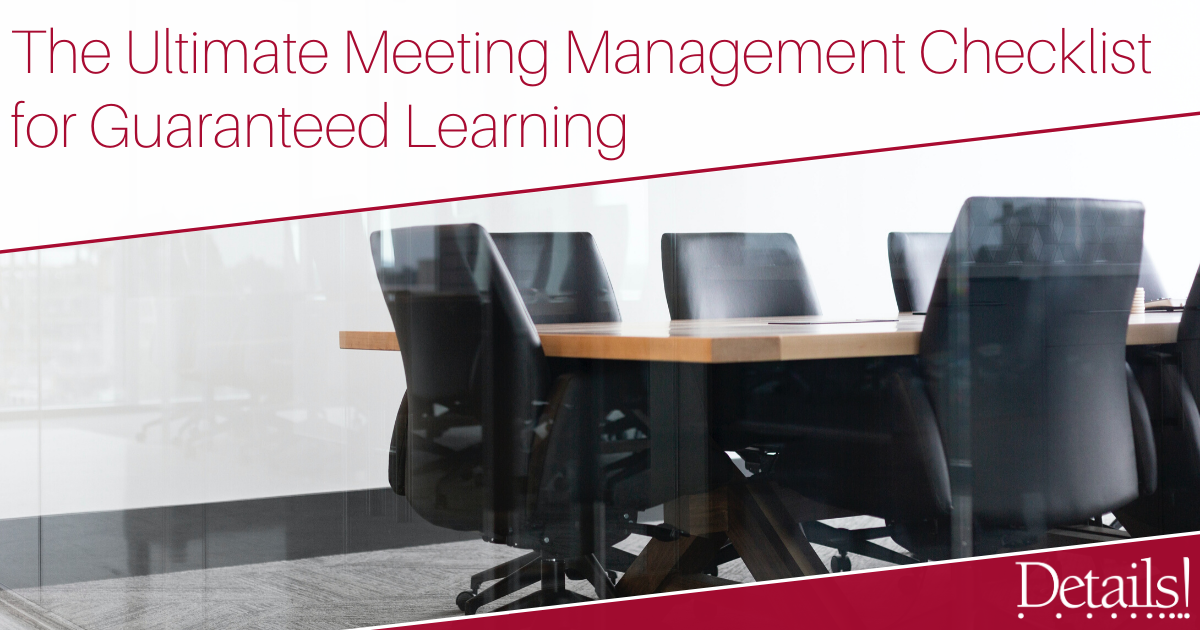The Ultimate Meeting Management Checklist for Guaranteed Learning
If you were to ask those in your company what the purpose of your meetings were, they may not always have an answer for you. The problem is that many of the meetings held within corporations and small businesses can be seen as a ‘waste of time and resources’, and often leave attendees ‘wishing it was an email’. This is one of the most common issues facing meetings today (both in-person and virtual), and it is also one of the easiest things to solve! There are ways to ensure that your attendees will learn something new and gain valuable insight from your meetings (and be glad it was not just an email)!
Our Details! team has spent time researching and attending sessions about ‘learning meetings’ that will help to improve conferences and larger meetings, ensuring they offer more of an educational experience. So, whether you are planning a live event or going virtual, here is your ultimate meeting management checklist for guaranteed learning and to help your attendees get more out of the experience!
Move Away From ‘Presentations’
If you want to ensure your attendees’ boredom, then speaking AT them for over an hour is the way to achieve that. BUT if you are hoping to manage your meeting so that people walk away knowing they have learned something useful, then it is time to move away from passive ‘presentations’ and one-way dialogues. Instead, adapt and use different models that bring out the most learning and engagement! Sure, we can WATCH someone cook, but there are a lot of people out there who still aren’t master chefs despite having a subscription to Gordon Ramsay. It would be a lot better if you had the teacher beside you and you were equipped with all the right tools and ingredients. You can learn a lot more by not only hearing an expert but also getting to understand the experiences of others in the room. Odds are someone is going to learn from your experience and you will learn from theirs. Change up the discussion and talk TOGETHER!

Change Your Set-Up
If you are able to hold a meeting in-person, you want to set up your room in a way that allows people to interact with each other. Change the layout and set it up so that people can talk to everyone, not JUST the person beside you. Because when you are 6 meters away from someone with a table between you and the room is FULL of people talking, you are limited to discussions with only the person closest to you. Alternatively, if you are hosting a virtual meeting, then it is crucial to pick a platform that allows for you to put people into groups so they can have similar conversations as they would in a physical room. Moving people into groups and alternating the groups regularly allows for the opportunity to gain insight from various minds rather than just one.

Use the Crowd’s Expertise
What better way to learn from the professionals in the room than to have an opportunity for experienced attendees to share! Providing opportunities for people to share their own resources and experiences is a great way to guarantee learning for others. Begin by letting people introduce themselves and give them time to get to know one another (it is easier to get people to talk to each other when they have had a chance to know WHO they are talking to). This way people feel more comfortable opening up and sharing!
Keep it Short
The attention span for an adult is 7-11 minutes. Meeting management 101: if your presentation has been going on for more than 15 minutes, you have already lost the attention of your audience – change it up! Split the presentation into shorter pieces or do things differently. For example, the first 10 minutes might be a regular PowerPoint, then you could change it to an interview format or take questions, then transition once again after that.
Give Them Time to Digest
How many presentations have you been to where they finish talking and immediately ask if there are any questions. At this point you are often still trying to understand what was just said, and if you don’t come up with a question fast, then you will miss out on your chance to ask. Instead, give people 5-10 minutes to reflect on the presentation and the meeting as a whole. If you can, break up into smaller groups to allow for discussion. How does what they learned apply to them? What was useful and what was confusing? What would you like more information on? Task your audience to focus on how the presentation will be useful rather than letting it become a time to talk about the weather or upcoming weekend plans.
Allow Idea and Experience Sharing
Just because the presenter is speaking on an area of expertise, doesn’t mean they are the only one in the room with knowledgeable insight! Give people time to share their own experiences and ideas, not just to the presenters but to each other. A great way to do this is to allow for small groups to talk throughout the presentation, letting them share thoughts as they come up. Then instead of having each group report back, ask for people to share something interesting or exciting from their group. You are much more likely to hear the wacky and fun ideas that way!
Have a Facilitator
One of the best ways to ensure your attendees are learning at a meeting event is to have someone taking over the meeting management and facilitating the time. This person should be someone who is friendly and high energy and will captivate your audience’s attention. They should speak loudly and clearly, offer opening remarks, and provide questions that are carefully thought out. The key to this role? Someone who can LISTEN! They must be able to listen to what attendees are saying, incorporate some of what they hear in the smaller group discussions back into the larger ones for everyone’s benefit. The same goes for an online meeting – have someone dedicated to the chat online who can facilitate the discussions in the right way.
Ready to excel at meeting management and ensure your attendees are learning lots with every minute? Follow this checklist to ensure you use proper time-management methods and information sharing opportunities to get the most out of your meeting events!
Not sure how to manage a meeting on your own? Feeling overwhelmed with the virtual meeting technology? Let Details! help you organize, manage, and coordinate a meeting that will succeed!
Sources:
Learning Meetings and Conferences in Practice by Steen Elsborg and Ib Ravn

